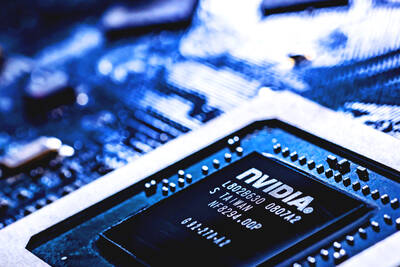The strong quake that rattled southern Taiwan last week would help ease mounting price pressure faced by liquid-crystal-display (LCD) panel makers as a brief disruption of production lines could offset a looming price downturn during the conventionally slack second quarter, market researcher DisplaySearch forecast.
The Austin, Texas-based researcher made the comments after a magnitude 6.4 earthquake hit Kaohsiung last Thursday.
The region is a major manufacturing base for some of the nation’s major electronic component makers, including Chi Mei Optoelectronics Corp (奇美電子), the nation’s No. 2 LCD panel maker, and PC monitor panel maker HannStar Display Corp (瀚宇彩晶).
“While it is too early to gauge the impact of supply and pricing of TFT LCD panels, we can assume that any downward pressure on panel pricing has been eliminated. In fact, there are some indications that there will be another panel price increase in March due to the earthquake’s impact on the supply chain,” DisplaySearch analyst Shawn Lee (李昕霖) said on the company’s Web site.
Chi Mei, which has Tainan as its biggest manufacturing center and operates a 8-generation plant in Kaohsiung, briefly halted all of its factories for checks.
Last time, Chi Mei took two or three days to resume operation at all plants, Lee said.
HannStar also shut down its fifth-generation plant in Tainan temporarily and the panelmaker took three to five days to restart its plant after the last earthquake, Lee said.
“The demand growth of larger sizes is slowing, and this creates some price pressure. However, due to the [latest] earthquake’s impact on the supply chain, the possible downward pressure on panel pricing has been eliminated for the time being,” DisplaySearch said in a report issued on Friday.
Prices for most LCD TV panels are expected to be flat in the first half of this month, compared to two weeks ago, the latest price report issued by DisplaySearch showed.
A mainstay 32-inch TV panel was expected to be priced at US$208 per unit, the report said.
Prices for panels used in LCD monitors are expected to extend their uptrend on concerns about supply constraints, DisplaySearch said. Panelmakers are expected to raise prices by US$3 to US$5 per unit this month partly because of a ripple effect from the quake, it said.
The price for a mainstream 19-inch LCD PC monitor might rise by US$2 to US$85 per unit in the first half of this month from two weeks earlier, DisplaySearch said.
Prices for notebook computer panels are also expected to rise.
“With the latest earthquake in Taiwan, the atmosphere seems to have changed a little. We expect the notebook panel price this month could increase in the second half if the impact on panel makers is higher than expected,” the researcher said.
A Taipei-based research firm, WitsView, predicted that prices for monitor and notebook computers would go up by 1 percent or 2 percent in the first half of this month, compared to the second half of last month.

UNCERTAINTIES: Exports surged 34.1% and private investment grew 7.03% to outpace expectations in the first half, although US tariffs could stall momentum The Chung-Hua Institution for Economic Research (CIER, 中華經濟研究院) yesterday raised its GDP growth forecast to 3.05 percent this year on a robust first-half performance, but warned that US tariff threats and external uncertainty could stall momentum in the second half of the year. “The first half proved exceptionally strong, allowing room for optimism,” CIER president Lien Hsien-ming (連賢明) said. “But the growth momentum may slow moving forward due to US tariffs.” The tariff threat poses definite downside risks, although the scale of the impact remains unclear given the unpredictability of US President Donald Trump’s policies, Lien said. Despite the headwinds, Taiwan is likely

When Lika Megreladze was a child, life in her native western Georgian region of Guria revolved around tea. Her mother worked for decades as a scientist at the Soviet Union’s Institute of Tea and Subtropical Crops in the village of Anaseuli, Georgia, perfecting cultivation methods for a Georgian tea industry that supplied the bulk of the vast communist state’s brews. “When I was a child, this was only my mum’s workplace. Only later I realized that it was something big,” she said. Now, the institute lies abandoned. Yellowed papers are strewn around its decaying corridors, and a statue of Soviet founder Vladimir Lenin

UNIFYING OPPOSITION: Numerous companies have registered complaints over the potential levies, bringing together rival automakers in voicing their reservations US President Donald Trump is readying plans for industry-specific tariffs to kick in alongside his country-by-country duties in two weeks, ramping up his push to reshape the US’ standing in the global trading system by penalizing purchases from abroad. Administration officials could release details of Trump’s planned 50 percent duty on copper in the days before they are set to take effect on Friday next week, a person familiar with the matter said. That is the same date Trump’s “reciprocal” levies on products from more than 100 nations are slated to begin. Trump on Tuesday said that he is likely to impose tariffs

HELPING HAND: Approving the sale of H20s could give China the edge it needs to capture market share and become the global standard, a US representative said The US President Donald Trump administration’s decision allowing Nvidia Corp to resume shipments of its H20 artificial intelligence (AI) chips to China risks bolstering Beijing’s military capabilities and expanding its capacity to compete with the US, the head of the US House Select Committee on Strategic Competition Between the United States and the Chinese Communist Party said. “The H20, which is a cost-effective and powerful AI inference chip, far surpasses China’s indigenous capability and would therefore provide a substantial increase to China’s AI development,” committee chairman John Moolenaar, a Michigan Republican, said on Friday in a letter to US Secretary of